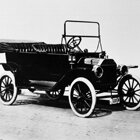
A poster promoting the Mayday protests.
On This Day: Mayday Tribe Anti-War Protesters Clash With Police in Washington
by findingDulcinea Staff
On May 3, 1971, authorities in Washington quelled an anti-war protest organized by the Mayday Tribe, which had hoped to shut down the city. About 12,000 protesters were arrested over the course of several days, the largest mass arrest in U.S. history.
The Mayday Tribe Protest
The Mayday demonstration was the culminations of weeks of anti-war activity in Washington. Between April 19-23, more than 1,00 members of the Vietnam Veterans Against the War staged protests; they held marches to Arlington Cemetery, encamped on the National Mall and discarded their medals, ribbons and other military paraphernalia on the steps of the Capitol. John Kerry, the future presidential candidate, appeared before the Senate as a spokesman for the group, speaking out against the continuation of the war.
On April 24, an estimated half-million people came to Washington to protest during the Senate hearings. Among these protesters, a more militant minority, including Rennie Davis, a member of the Chicago Seven, began planning the Mayday protests to block traffic and access to government buildings.
The leftist website libcom.org explains, “Mayday wouldn't be a standard protest rally, where a series of speakers … would lecture to a passive crowd. It wouldn't be a conventional protest march, where demonstrators would trudge along a route that had been pre-arranged with the police, shepherded by movement marshals controlled by the protest leadership. With much antiwar protest having become dreary and routinized, … Mayday promised to be novel and unpredictable.”
The protests began on Saturday, May 1; the government revoked the protesters’ permit the following day and planned operations to end the protests on Monday, when the city returned to work.
The government placed 10,000 federal troops at strategic points around the city, while 5,100 local police officers and 1,500 National Guardsmen swept through the protesters, estimated by The New York Times at 12,000-15,000. The Times described, “At the height of the disturbances, tear gas fumes filled the air over some of the city's most famous monuments, streets and grassy flowered parks. Garbage cans, trash, abandoned automobiles and other obstacles littered some chief arteries.”
About 7,000 people were arrested that day, in addition to 5,000 the previous and following days. Most of the more than 12,000 arrested protestors were held briefly at the RFK Stadium practice field before being released without charge; it was the largest mass arrest in U.S. history.
The protests failed to shut down the government, as many workers simply arrived early to avoid the chaos. The Times wrote, “A spokesman for the Mayday Tribe conceded that ‘we didn't stop the Government this morning, but we've never done this before.’ For future protests of this order, he said, ‘we'll be more together.’”
On April 24, an estimated half-million people came to Washington to protest during the Senate hearings. Among these protesters, a more militant minority, including Rennie Davis, a member of the Chicago Seven, began planning the Mayday protests to block traffic and access to government buildings.
The leftist website libcom.org explains, “Mayday wouldn't be a standard protest rally, where a series of speakers … would lecture to a passive crowd. It wouldn't be a conventional protest march, where demonstrators would trudge along a route that had been pre-arranged with the police, shepherded by movement marshals controlled by the protest leadership. With much antiwar protest having become dreary and routinized, … Mayday promised to be novel and unpredictable.”
The protests began on Saturday, May 1; the government revoked the protesters’ permit the following day and planned operations to end the protests on Monday, when the city returned to work.
The government placed 10,000 federal troops at strategic points around the city, while 5,100 local police officers and 1,500 National Guardsmen swept through the protesters, estimated by The New York Times at 12,000-15,000. The Times described, “At the height of the disturbances, tear gas fumes filled the air over some of the city's most famous monuments, streets and grassy flowered parks. Garbage cans, trash, abandoned automobiles and other obstacles littered some chief arteries.”
About 7,000 people were arrested that day, in addition to 5,000 the previous and following days. Most of the more than 12,000 arrested protestors were held briefly at the RFK Stadium practice field before being released without charge; it was the largest mass arrest in U.S. history.
The protests failed to shut down the government, as many workers simply arrived early to avoid the chaos. The Times wrote, “A spokesman for the Mayday Tribe conceded that ‘we didn't stop the Government this morning, but we've never done this before.’ For future protests of this order, he said, ‘we'll be more together.’”

























